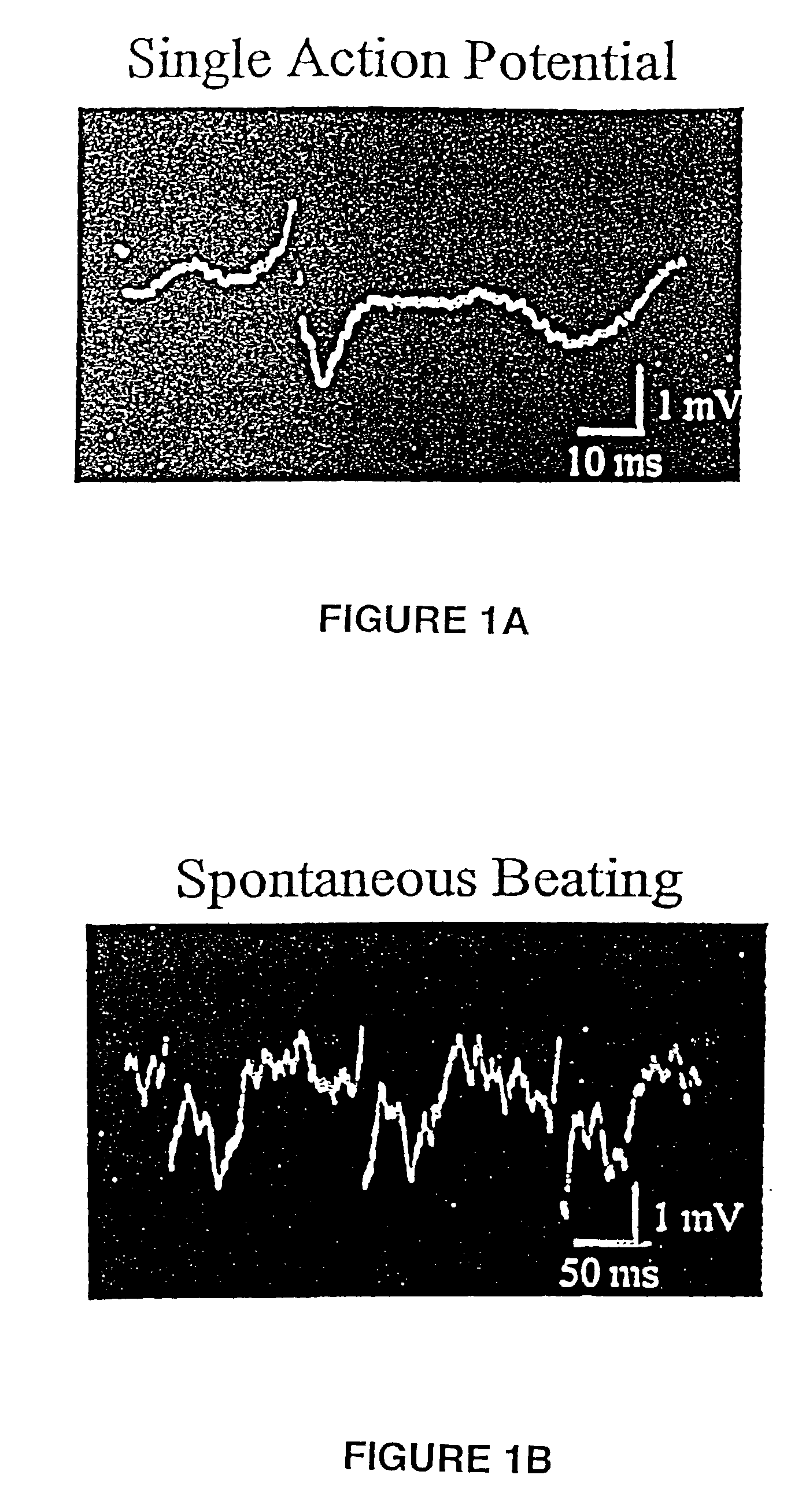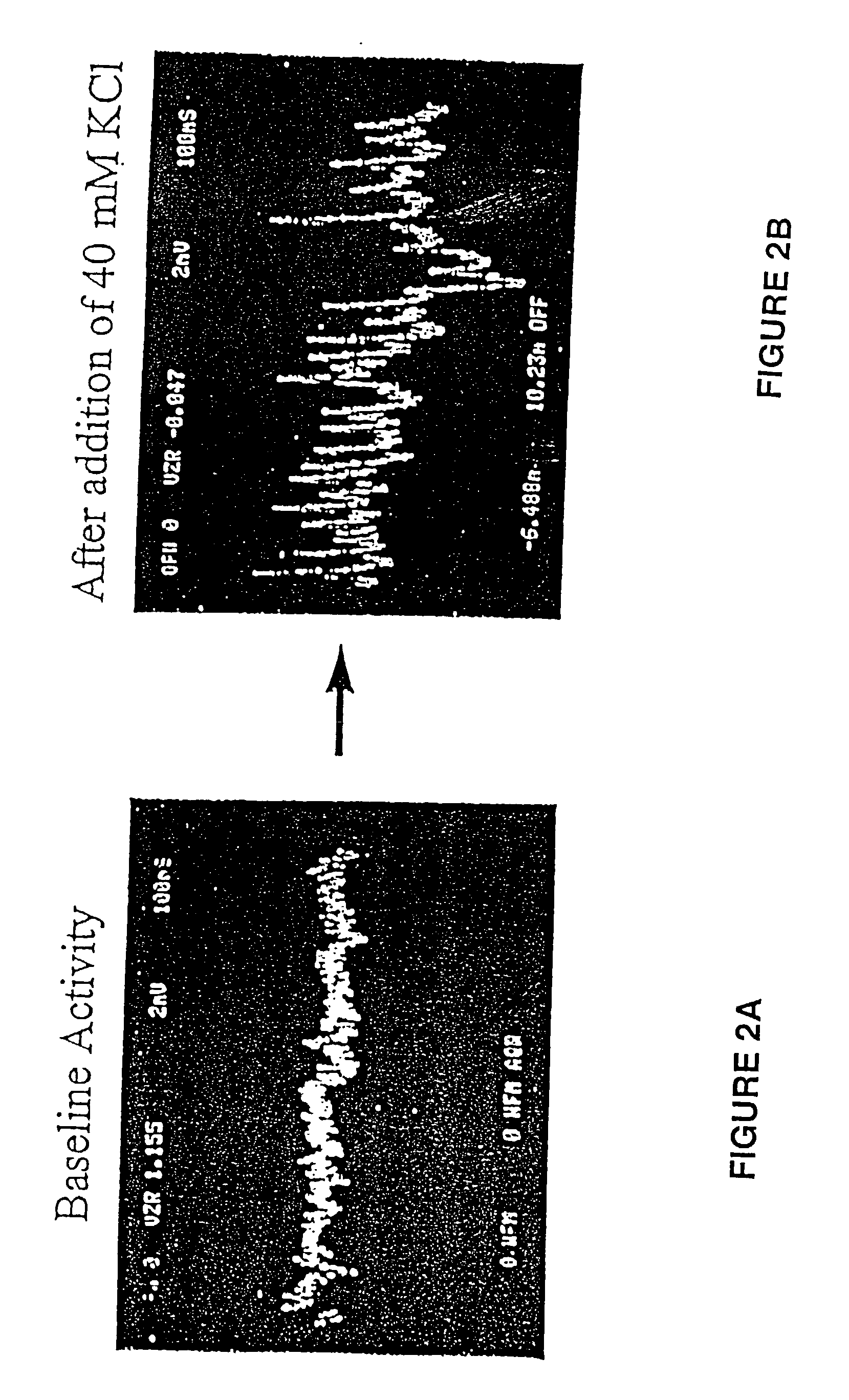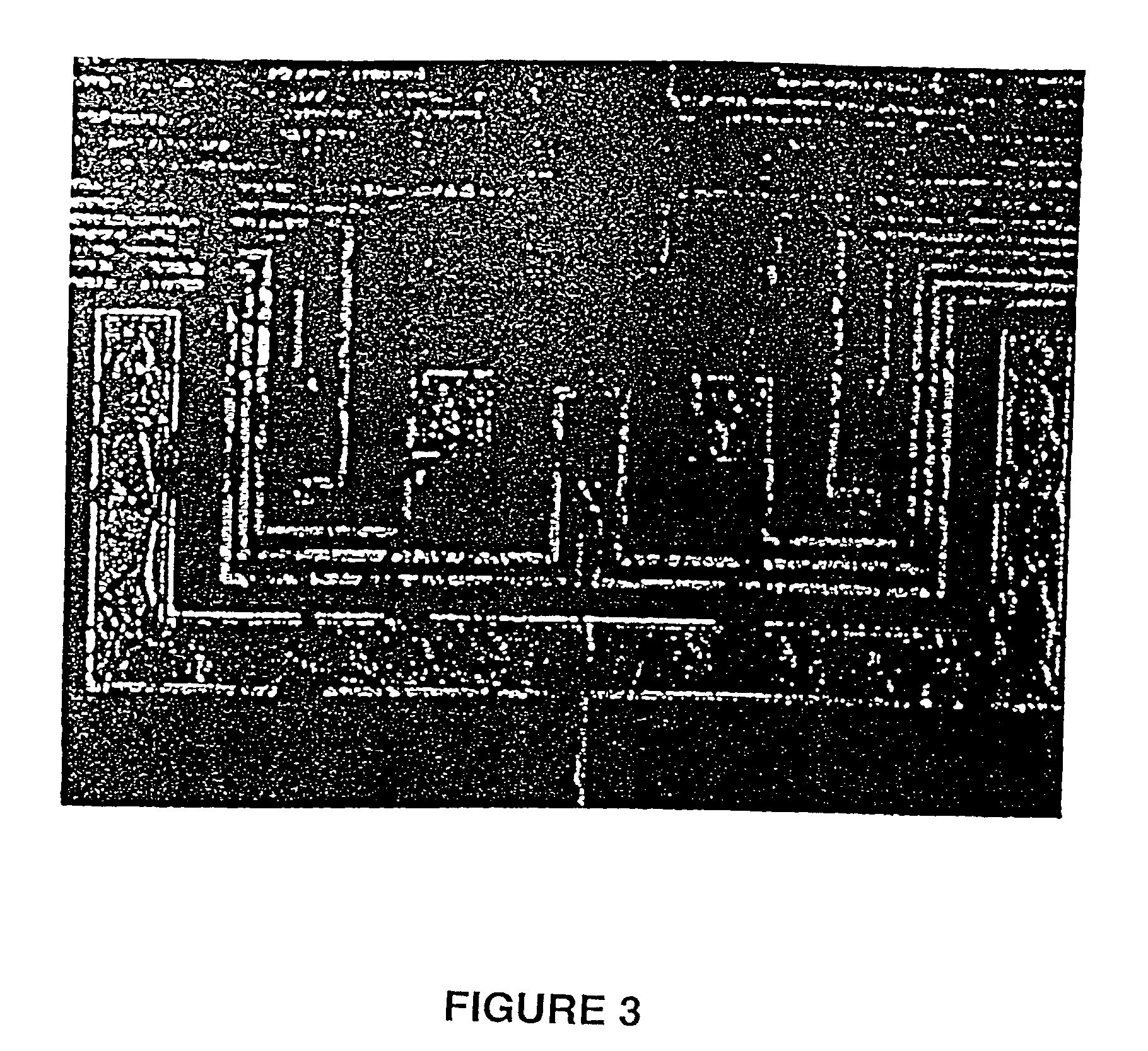High throughput functional genomics
a functional genomics and high throughput technology, applied in the field of high throughput functional genomics, can solve the problems of inability to perform high throughput analysis, limited techniques, and disorganized cultures, and achieve the effects of high impedance seal, reduced lateral flow of ions, and high impedance seal
- Summary
- Abstract
- Description
- Claims
- Application Information
AI Technical Summary
Benefits of technology
Problems solved by technology
Method used
Image
Examples
Embodiment Construction
[0050] The invention has several components that function together for determining the effects of a test subtance. One embodiment of the invention is a system comprising a solid state microelectrode; a cell culture which exhibits a electrical activity; and an intervening layer, which functions as a high impedance seal. The system is preferably accompanied by software capable of relating changes in the electrical activity of one or more cells of the cell culture to the physiological activity of the test substance (e.g., capable of deconvoluting an action potential). The term "test substance" is meant to cover broadly any substance whose effect on a biological system, such as a cell, one is attempting to determine. A test substance includes, but is not limited to, drugs, proteins, peptides, carbohydrates, nucleic acids, lipids, natural products, small molecules and the like. The "effects" of a test substance is likewise broadly construed and may include, but are not limited to, effect...
PUM
| Property | Measurement | Unit |
|---|---|---|
| diameter | aaaaa | aaaaa |
| diameter | aaaaa | aaaaa |
| v/v | aaaaa | aaaaa |
Abstract
Description
Claims
Application Information
 Login to View More
Login to View More - R&D
- Intellectual Property
- Life Sciences
- Materials
- Tech Scout
- Unparalleled Data Quality
- Higher Quality Content
- 60% Fewer Hallucinations
Browse by: Latest US Patents, China's latest patents, Technical Efficacy Thesaurus, Application Domain, Technology Topic, Popular Technical Reports.
© 2025 PatSnap. All rights reserved.Legal|Privacy policy|Modern Slavery Act Transparency Statement|Sitemap|About US| Contact US: help@patsnap.com



